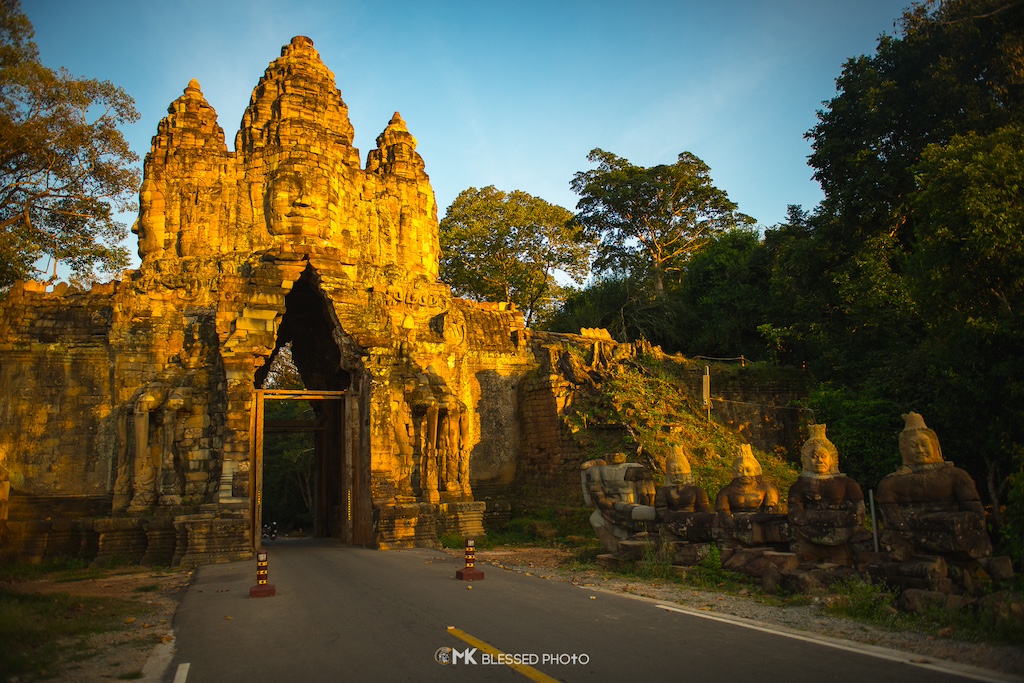(Photos by: MK Blessed Photo & Apsara National Authority)
Angkor Thom: The Last Great Capital of the Khmer Empire
Angkor Thom, the last and most enduring capital city of the Khmer Empire, is an architectural marvel and a testament to the ingenuity of ancient Khmer civilization. Established in the late 12th century by King Jayavarman VII, this vast city is renowned for its grandiose monuments and intricate carvings that reflect a rich cultural and spiritual heritage.
Covering an area of 9 square kilometers, Angkor Thom was a fortified city encircled by an 8-meter high wall and a wide moat, symbolizing a microcosm of the universe. The city's layout was meticulously planned, with roads and bridges adorned with magnificent sculptures leading to monumental gates.
At the heart of Angkor Thom lies the Bayon Temple, famous for its enigmatic face towers, each bearing the serene and smiling visage of Avalokiteshvara, which some believe to also represent King Jayavarman VII himself. The temple's central location within the city reflects the intersection of heaven and earth.
Other notable structures within Angkor Thom include the Terrace of the Elephants, used as a platform for the king’s grand audience hall, and the Terrace of the Leper King, adorned with intricate carvings of deities and mythological beings.
The Baphuon Temple, a representation of the mythical Hindu Mount Meru, is another key attraction, showcasing the architectural transition from the Hindu to the Buddhist empire. The Royal Palace area, though mostly in ruins, offers a glimpse into the grandeur of the Khmer kings' residential quarters.
Angkor Thom's impressive architecture, symbolic artworks, and layout demonstrate the advanced urban planning and religious conceptions of the Khmer Empire. A visit to this ancient city offers a journey through time, where the splendors of the past come alive amidst the jungle's embrace.
Major Sight Spots in Angkor Thom
Bayon Temple: The central temple with iconic face towers.
Terrace of the Elephants: A historic royal viewing platform.
Terrace of the Leper King: Known for its detailed carvings.
Baphuon Temple: A temple-mountain representing Mount Meru.
Royal Palace Area: The ruins of the royal residential complex.




